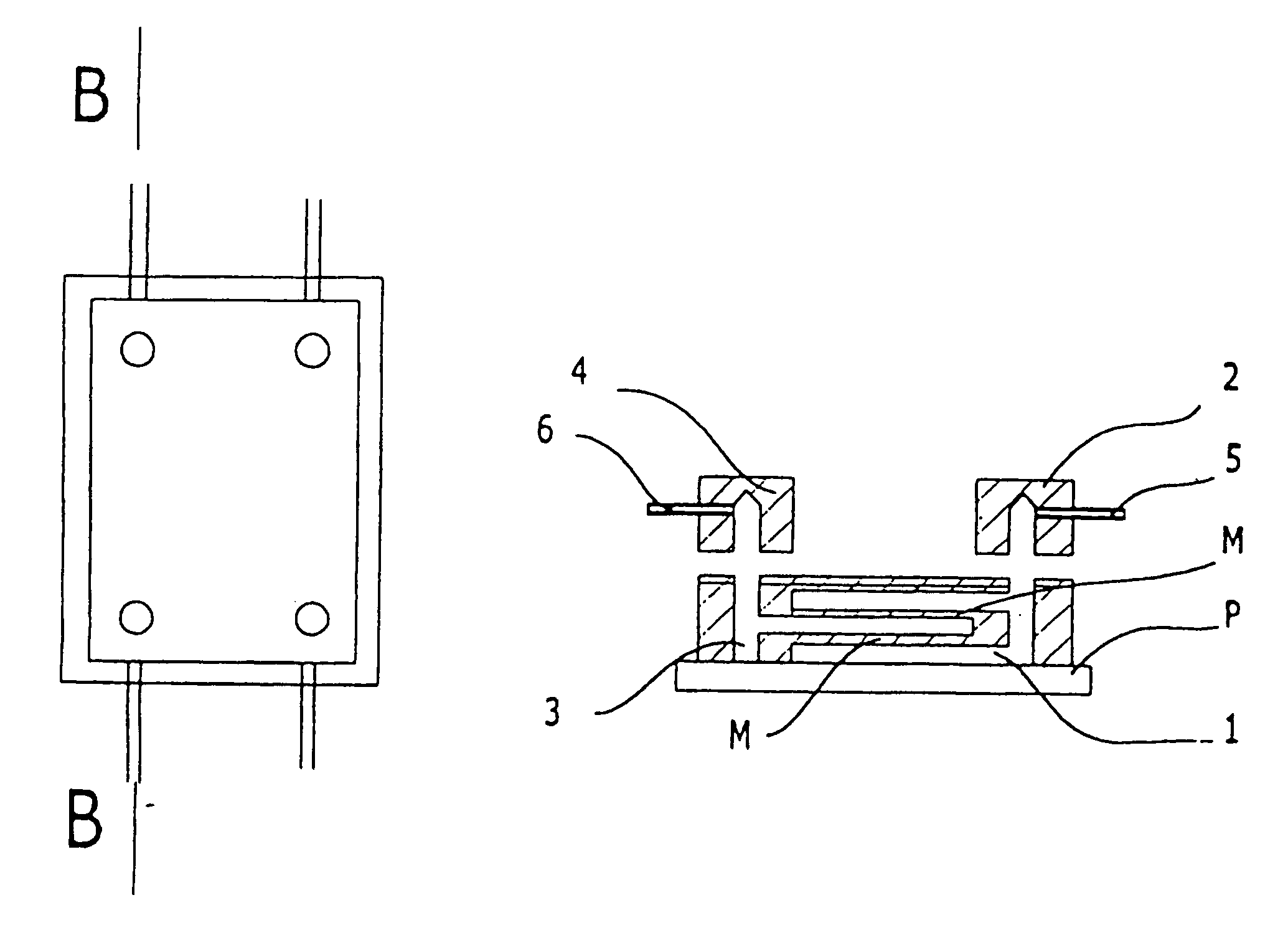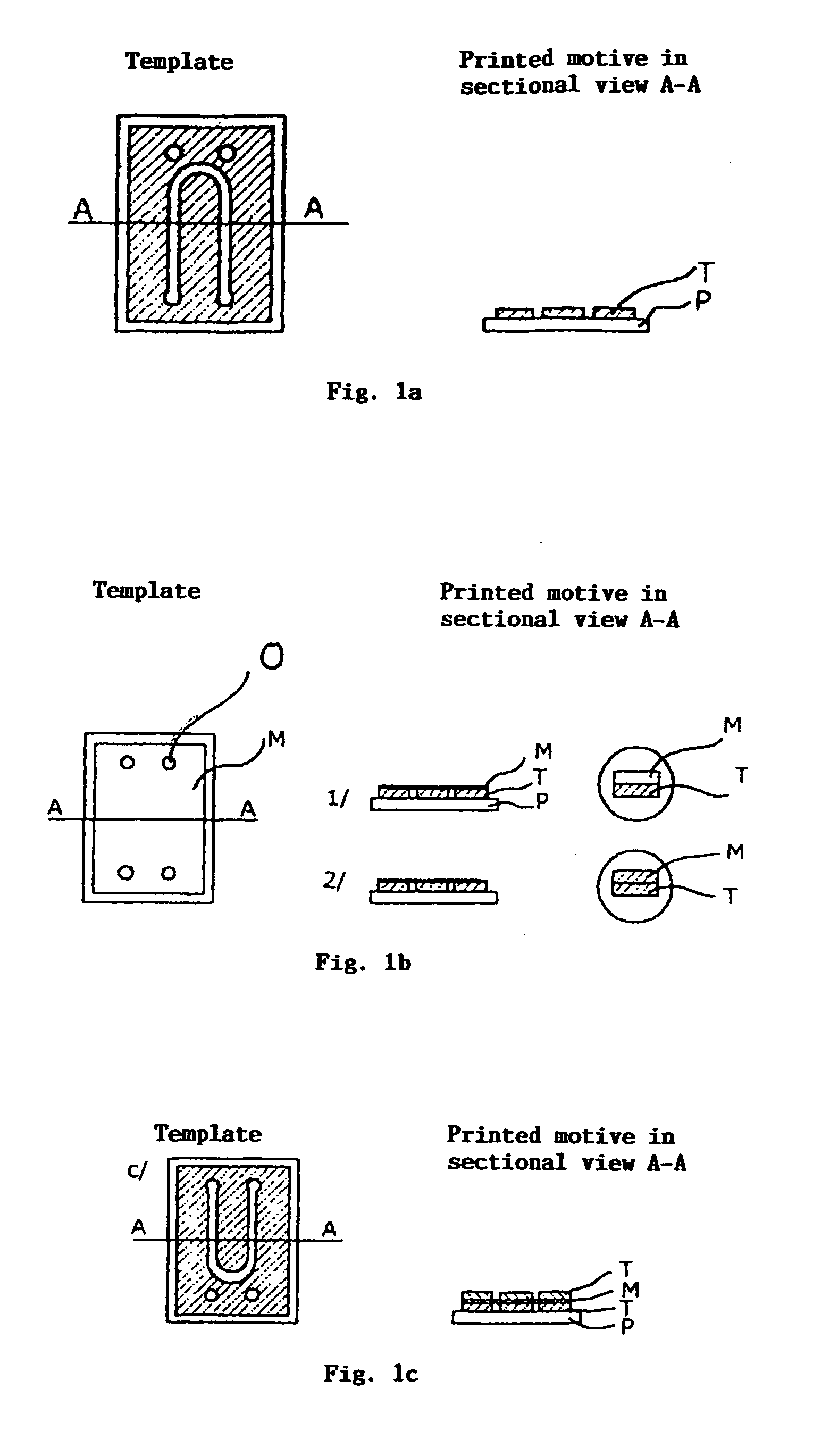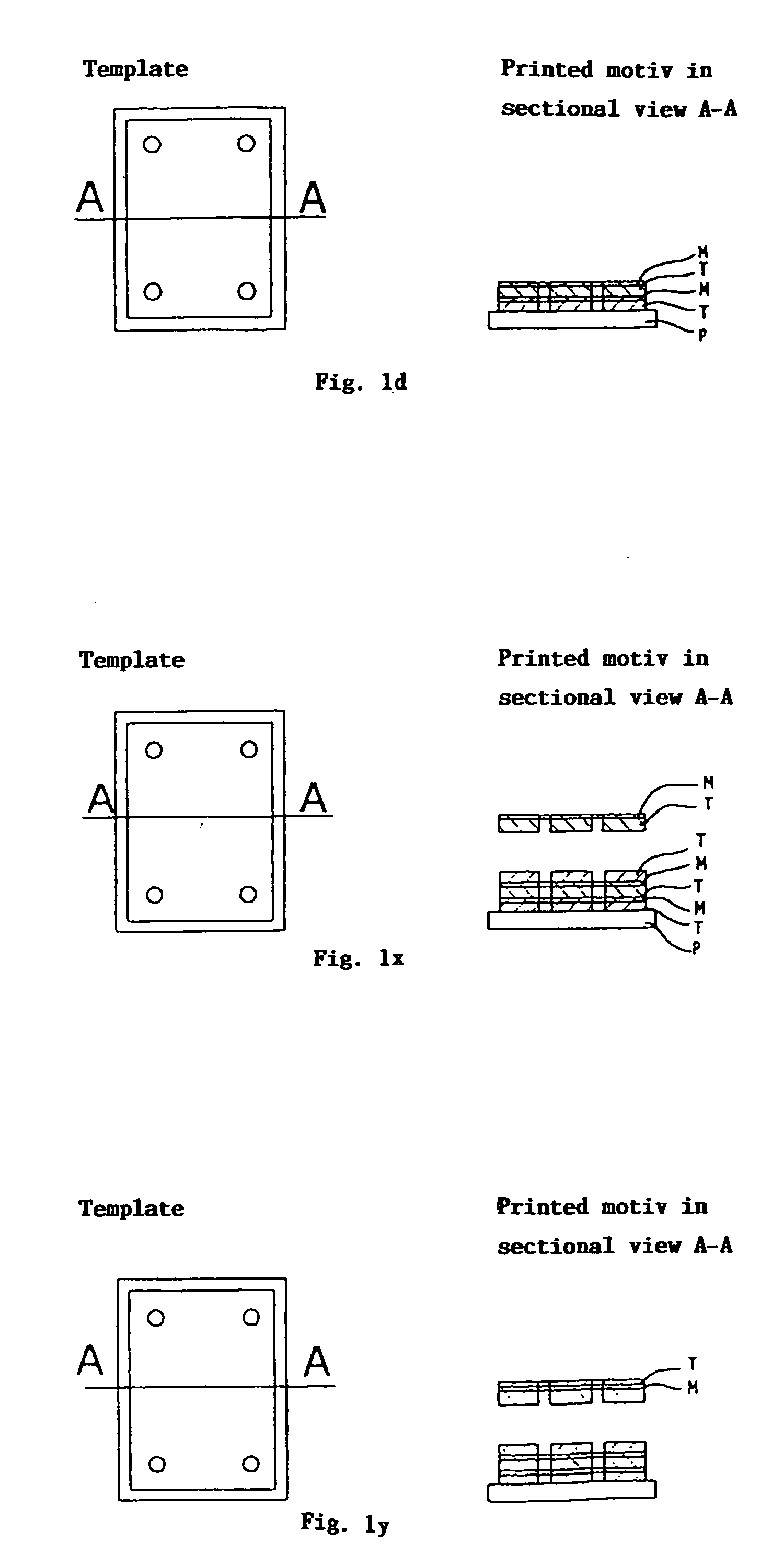Three-dimentional components prepared by thick film technology and method of producing thereof
a technology of three-dimensional components and thick film, applied in the direction of positive displacement liquid engines, optical light guides, screen printers, etc., can solve the problems of high technological requirements, difficult production of more complicated structures, and inability to integrate complex chemical processes
- Summary
- Abstract
- Description
- Claims
- Application Information
AI Technical Summary
Problems solved by technology
Method used
Image
Examples
example 1
Flow Through Filter Produced by Thick Film Technology
[0042] The flow through filter production steps are described in FIGS. 1a to 1y. Layer T that create the channel for filtered liquid input and a collecting channel for a filtrate output is printed on a ceramic pad P in the first step (FIG. 1a). There is used e.g. a polymer paste Du Pont 5483. The width of the channel is 250 μm, its height is 15 μm.
[0043] On the non-hardened print of the previous layer is put a porous membrane M produced from polyethylene terephthalate neucleopor with 1 μm pores and a thickness of 10 μm (see FIG. 1b-1). The membrane has four holes O for liquid inflow and filtrate output. Owing to a surface tension is the paste partly sucked in the membrane at the contact sites between the membrane and paste (FIG. 1b-2) and a homogenous connection with the printed layer T occurs. The channel is closed and the pores stay free.
[0044] In the third step (FIG. 1c) the channel for filtrate output and channels for liqu...
example 2
Capillary Electrophoresis with Conductivity Detection
[0049] The production technique is shown in FIGS. 3a to 3f. Basic conducting links motive are printed on a corundum pad P in the first step using for example Ag conducting paste Tesla 9220 (FIG. 3a). The electrodes for electrophoresis and conducting detector electrodes E are printed in the next step using for example Au paste Du Pont 4140. The substrate is fired at 850° C. and the basic electric net formed. The channel structure 5 is printed using a dielectric paste (Du Pont 5483, for example) in the step figured in FIG. 3c. The appropriate channel side walls height is achieved by repeating this step. The membrane from polyethylene terephthalate nucleopor with 1 μm pores and thickness of 20 μm is inserted in the step figured in FIG. 3d and it is provided with holes O. The production is finished by printing the upper covering layer (FIG. 3e). Whole system is cured at 200° C. for 20 minutes. The entry part for easier sample applyi...
example 3
Microdialyzing Unit with a Biosensor
[0052] The production process according to the invention can be used with advantage for construction of microdialyzing unit for continual blood analyzis by biosensor. The schema of the unit is on the FIG. 4. Directly to the injection needle is integrated a miniature system of the size 25×7 mm, which contains three electrode amperometric biosensor and dialyzing cell, which allows the separation of plasma from the blood and its dilution. Blood is inputting to the sensor by injection needle 1 inserted to the patient's vein. Than it runs through the channel created in the way according to the invention, whereby from point 9 till point 8 the channel bottom is formed by a half penetrating membrane. Blood is lead away by mouth piece 2. Dialyzing liquid enters at point 3 and is lead through the channel, the ceiling of which is in the part signed 8 and 2 common for the channel bottom for blood. This is a point where dialysis of low molecular weight speci...
PUM
| Property | Measurement | Unit |
|---|---|---|
| thickness | aaaaa | aaaaa |
| size | aaaaa | aaaaa |
| thickness | aaaaa | aaaaa |
Abstract
Description
Claims
Application Information
 Login to View More
Login to View More - R&D
- Intellectual Property
- Life Sciences
- Materials
- Tech Scout
- Unparalleled Data Quality
- Higher Quality Content
- 60% Fewer Hallucinations
Browse by: Latest US Patents, China's latest patents, Technical Efficacy Thesaurus, Application Domain, Technology Topic, Popular Technical Reports.
© 2025 PatSnap. All rights reserved.Legal|Privacy policy|Modern Slavery Act Transparency Statement|Sitemap|About US| Contact US: help@patsnap.com



